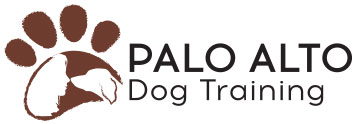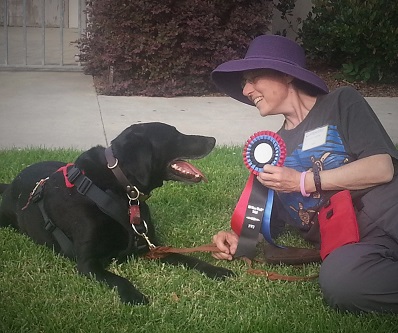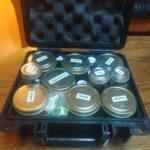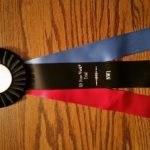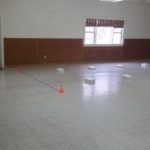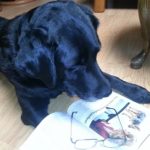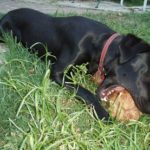Have you ever wondered, what is the Nose Work competition experience like? You must do some searches with your dog, right? Are you there all day? What happens when you’re not searching? How will you know what to do and where to go? What is it really like to be there?
Searches
The type of searches you do with your dog depend on the organization sponsoring the Trial, and the type of Trial. The Rule Books for the sponsoring organization contain the best information. Read them before entering any Trial. Sniffing Dog Sports and USCSS are just two of the new organizations that hold canine scenting competitions. Because my certification to teach Nose Work comes from the National Association of Canine Scent Work (NACSW), NACSW Trials tend to be my focus; here is more information on the Odor Recognition Test (ORT), NW1 Trial, and NW3 Trial.
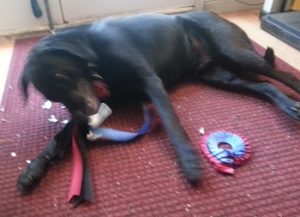
Arrival
About a week before the Trial, you’ll receive an email telling you when to arrive, in addition to other Trial details. Plan on arriving within the time window suggested. A volunteer will direct you, as to where to park.
Once you’ve parked, you’ll notice that some vehicles may be covered with shade cloths, or even canopies. These are primarily to keep the car cool and comfortable for the dog, during the day. If your dog doesn’t want to see other dogs out of the car window, they do double-duty as a vision-block. A canopy can also provide shade for you, while you tailgate (see below).
- The most popular sun shade is the Aluminet. It is very effective at blocking the sun while allowing maximum air flow. For storage, it is lightweight but bulky.
- A far cheaper option is the Space Blanket. With the shiny side facing out, it is very effective at blocking the sun, but allows no air flow at all. It is very easy to store, as it folds up very compactly.
- The BreezeGuard secures your dog in the car, with the windows partially or all the way open. They are custom-fitted for each make/model of car, easy to install, and allow free movement of the window to open/close.
- Ventlocks provide ventilation by giving you a secure way to keep your vehicle locked with the doors partway open.
- Canopies are hard to put up and break down alone, but asking for help is a great way to make new Nose Work friends.
- Magnets, Clamps, and plastic Zip Ties will help keep everything in place.
- For more guidance, visit or join the FaceBook Group Dog Sport Vehicle Ideas and Set-Ups.
Check-in
Before or after you’ve decked out your vehicle, you’ll check in. A volunteer will ask you to sign some release forms, and give you a name tag and a number: your run order. At an ORT, the run order will start with #1 and continue in order until complete for that odor; then, after a break, start at #1 for the next odor. At a Trial, typically two dogs will start at once, on two different searches; dog #1, plus another number to be announced at the Briefing. By the end of the day, all the dogs will have run all of the searches. Sometimes, they’ll also give you a piece of paper with your number on it, to tape onto your vehicle. This will help the parking lot volunteers find you, when your turn is coming soon.
The volunteers will tell you where you can potty your dog, and where the competitor restrooms are. It’s important that you cooperate. The owner of the Trial site may be particular about keeping dogs away from certain areas; Trial sites are hard to find, and if we want to be invited back, we need to be great guests. Also, if you wander too far, you may have sight-lines to the search areas, which would be cheating.
Briefing and walk-through
After waiting what seems like forever, volunteers will round up all of the competitors, for the Briefing. They will give you an overview of the day, and introduce you to the Judges, the Certifying Official (CO), the Trial or ORT Host, and a few others. They will describe the searches briefly, and likely give you time limits. If appropriate, they will tell you how many hides are in each search area. You’ll have an opportunity to ask questions. At an ORT, there will be a separate briefing for each odor.
Next, you’ll usually get to do a walk-through of the search areas, at an ORT, NW1, NW2, or NW3. There are generally no walk-throughs at Elite and Element Trials, which means the first time you’ll be seeing the search areas, is when it’s your turn to search.
During the Briefing and Walk-Through, your dog will be alone in the car, unless you bring along a companion to stay with her.
If you are the first or second dog to run, you’ll be asked how long it will take you to be ready to run your dog. A good answer is in the 5-10 minute range.
The trial begins
No matter where you fall in the run-order, you will spend most of your day waiting, especially at the lower levels of competition, where the searches can be very short. In fact, the very fastest dogs in an NW1 often have a combined search time, for all four searches, of around a minute or two. Once you progress to the higher levels, you and your dog will appreciate the rest time between the challenging searches.
Dog etiquette
When not searching, your dog must wait in your car, or inside a crate right next to your car. Almost everyone keeps their dogs inside their vehicles. In colder weather, it can be warm and snug in the car. In hot weather, a crate outside the car, under your canopy and/or shade cloth, may be cooler. If you have a hybrid or fully electric car, and can run your air conditioning without the gas engine, it is a great way to keep your dog cool without gassing your fellow competitors with your exhaust.
Under NACSW and SDS rules, your dog must always be in the car or crate, unless on the way to a short potty break, or going directly to/from the search area. If you think your dog may have trouble waiting that long in the car, you will have to choose between deciding that Trials are not for you and your dog, or working on it. (That’s what I did, and it was a lot of work, but worth it! Staying quietly in the car is a great life-skill for your dog to have: it will allow him to travel with you more often.)
The NACSW has a terrific write-up on parking lot etiquette.
Dog Equipment
You’ll want to bring the equipment you normally use for Nose Work games, including your dog’s harness and leashes. Don’t forget your dog’s favorite Nose Work rewards: treats and/or toys. If your dog needs extra distance from other dogs, bring a red bandanna to tie to your dog, or attach to your belt.
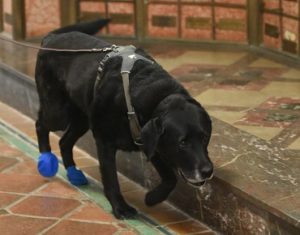
Your dog is also allowed to certain clothing. Too cold? Wear a fleece vest. Too wet? Wear a raincoat. Too hot? Wear a reflective coat. Slippery floors or hot pavement a problem? Wear shoes. Trials generally permit your dog to wear anything that promotes physical comfort; be sure to check the Rule Book for specifics.
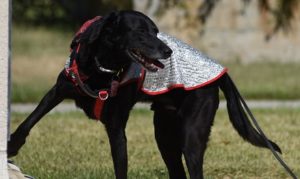
Dogs with issues
If your dog has fear, excitement, or aggression issues, I urge you to read this excellent NACSW write-up, which covers more than just reactive dogs. Take some time to think about whether your dog is ready, or even suited, for facing trial day challenges. If you have any concerns, your Instructor is a great source of help and information.
Tailgate time
You may stay inside your vehicle with your dog, or hang out in the parking lot. Most people bring camp chairs of some sort, plus reading material, or coloring books, or other amusements. Bring your own lunch, beverages, and snacks. You’ll want appropriate clothing and accessories to keep you warm and dry in the winter, or cool in hot weather.
Introduce yourself to your neighbors who parked near you. You already have something in common to bond over: Your Nose Work canine partners! If you’re like me and struggle to make small talk, start by asking what kind of dog they have, how long they’ve been doing Nose Work, and whether and how Nose Work has impacted their lives. Just don’t discuss any of the searches at that day’s Trial.
At my most fondly-remembered Trials, competitors organized a pot luck. It’s a great way to get to know more people, while munching on yummy snacks. If you are on FaceBook, an easy way to start a pot luck at your next Trial, is to post the suggestion on the Northern California Nose Work Group (for a Northern California Trial). Include the location and date of the Trial, and you’re most of the way there already.
When it’s your turn
The volunteers will let you know when your turn is coming up. They will give you time to get your dog, and visit the doggie potty area. Then they’ll direct you to your first staging (waiting) area.
Practice boxes
At most Trials and ORTs, they’ll have practice boxes near one of the staging areas. There will be three or four boxes with no odor, and one box with odor. The odor box will be clearly marked, and if you’re not the first team, likely somewhat smashed.
You are welcome to use the practice boxes, or not. The practice boxes can give you something to do to calm your Trial nerves, and they can get your dog in the mood for searching. Some dogs don’t want to have to find extra hides, and some handlers don’t want the extra risk that their dog won’t identify the odor box, which compounds the Trial nerves. My dog and I both love the practice boxes, and always use them. In fact, when he was new to Nose Work, he never focused until after he’d found his first hide: without practice boxes we would have been in trouble! You’ll have to decide what works best for your own canine-handler team.
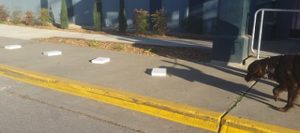
The practice boxes are for the dogs waiting at the staging area. They are not there for you to entertain your dog with all day as you wait. Be polite, and leave the practice boxes until you and your dog are waiting in the staging area.
Staging areas
Depending on the location, you may go right from the first staging area to your search, or there may be one or more additional staging areas before your search. The volunteers will show you where you need to go. My dog loves to get attention from the volunteers while we wait, so I always invite them to pet him; it helps to pass the time. The volunteers are instructed to leave your dog alone, unless you invite them to interact. Many people prefer to be left alone, to practice tricks with their dogs, or maybe calming exercises.
While you wait at your last staging area, you may wish to get your dog’s equipment ready for the Search. This will save time, and also help you be less flustered at the start line.
Finally, the search
When you finally reach the search area, the Judge’s Steward will greet you with a clipboard, and remind you: how many hides (if appropriate), location of the start line and boundaries, whether there’s an off-leash option, and the time limit. Pause, take a deep breath, remember that you’ve trained for this, and have fun searching!
Sportsmanship in K9 Nose Work
The Founders of K9 Nose Work recognized that competition can be a good thing, but too much can create a toxic environment. Therefore, at a K9 Nose Work Trial, you are not competing with anyone else for a Title. Whether you get a Title depends only on you and your canine partner. If all the teams find all the hides within the time limits, and call no false alerts, every single team can Title. If no teams qualify, no Titles are awarded. For me to win, I don’t have to hope that you’ll lose. The mood at a K9 Nose Work Trial is very supportive, with competitors sincerely wishing each other good luck.
Wrap-up
At an ORT, or Element Specialty Trial, once you’ve finished all of your searches, you’re done for the day. You may head home, even if others are still running. The only reason to stay, is if you want your score book officially signed by the Judge; then you’ll have to wait until the end. This is a holdover from before all the records were computerized and on the NACSW website, under your dog’s account.
Stick around, if you’re at an NW1, NW2, NW3, or Elite Trial. The Wrap-up and Awards Ceremony is one of the highlights of the day. The Certifying Official explains where the hides were, and why they were placed as they were. The Judges talk about what they saw during the day, how the teams coped with the odor challenges, and whether conditions changed throughout the day. Then, the Awards: First, Second, and Third Place for each Element and overall, and Ribbons for everyone who got a Title.
Are you ready for the competition experience?
Are you and your dog ready for the Competition Experience? Read the Rule Book, volunteer at as many Trials as you can, and check with your Certified Nose Work Instructor (CNWI). We hope to see you soon, at the next Trial, competing, or as a volunteer!
Copyright 2017 by Linda Fletcher
